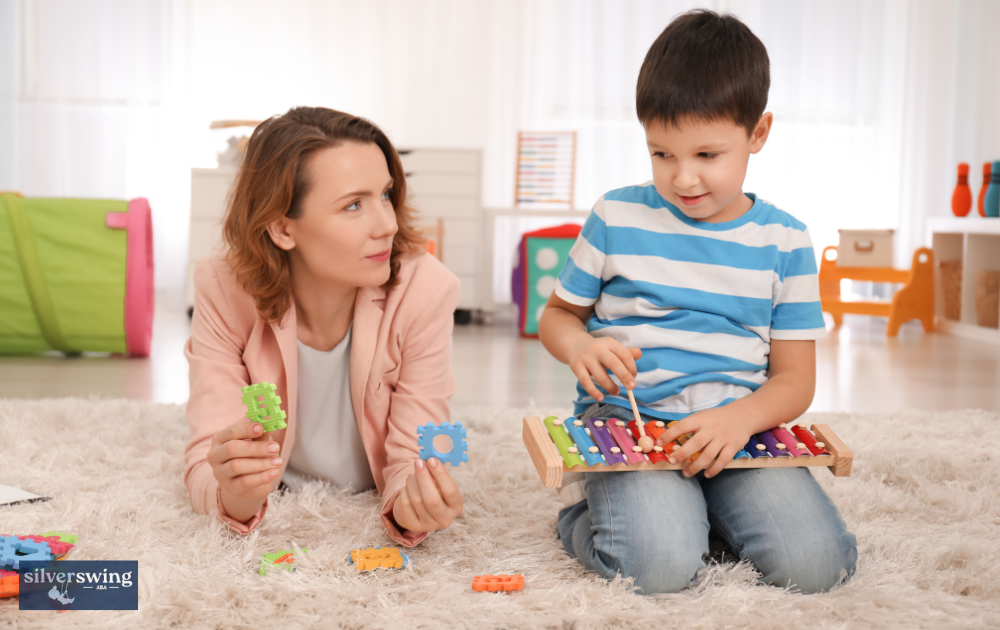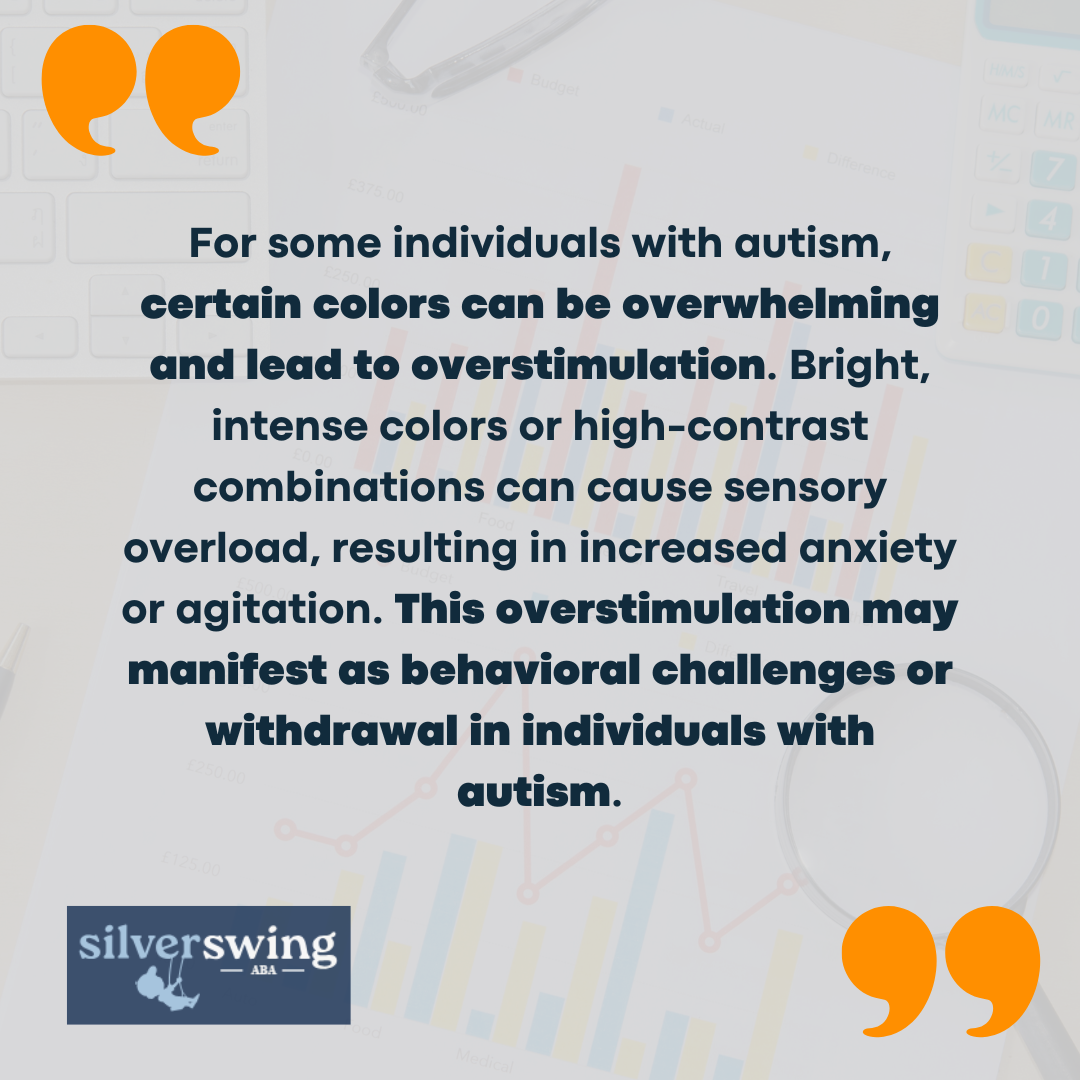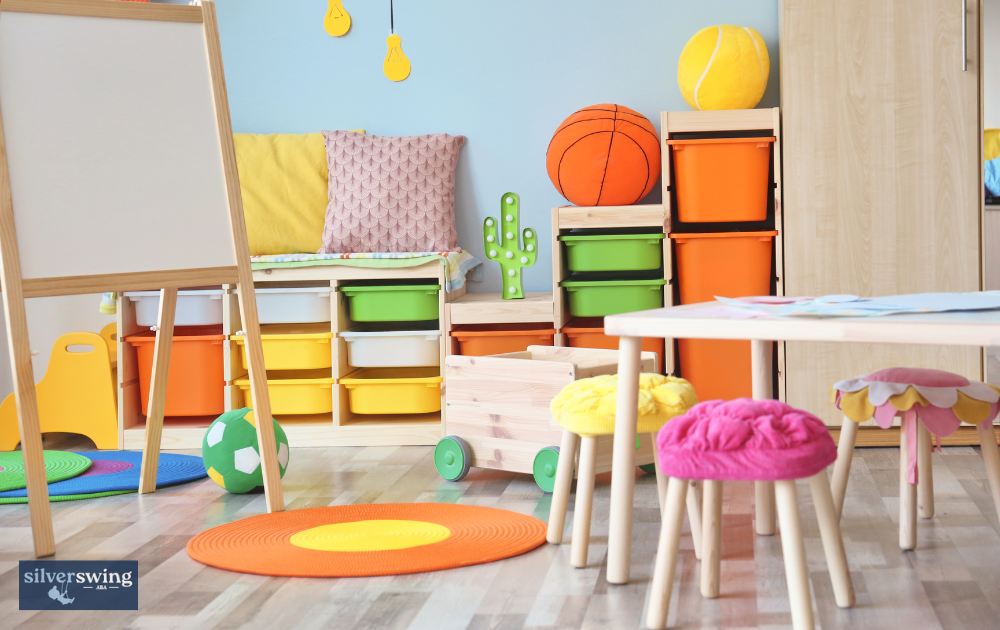Children with ASD often perceive colors differently compared to their neurotypical peers. Visual defects associated with ASD can lead to a preference for duller hues, which can have a calming effect on individuals with autism. White and gray undertones are particularly comforting for autistic children. These subdued colors may help create a visually soothing environment for those with ASD.

Color Preferences in Children
Color preferences can vary among children with ASD. Some specific colors have been linked to negative behaviors in children with ASD, while others are favored for their association with feelings of tranquility and safety.
For example, the color red has been associated with negative behaviors, while the color green, symbolizing tranquility and freshness, can provide a sense of security for children with ASD.
It’s important to note that color preferences can also vary within the autism spectrum. Each individual may have unique preferences and reactions to different colors. Some children with ASD may exhibit an obsession with a particular color, while others may have aversions or sensitivities to certain colors.
To better understand the impact of colors on individuals with ASD, it is crucial to consider the specific needs and sensitivities of each individual. By adapting the color palette in their surroundings, such as in learning environments or sensory rooms, parents, caregivers, and educators can create an environment that promotes comfort and reduces overstimulation for children with ASD.

Impact of Colors on Behavior
The impact of colors on behavior is an intriguing aspect when considering autism spectrum disorder (ASD). Colors can elicit various reactions and emotions in individuals, including those with ASD. Then there’s the fact that most autistic individuals are visual thinkers.
Let’s look at the calming effects of certain colors as well as negative reactions to specific colors.
Calming Effects of Certain Colors
Children with ASD perceive colors differently compared to their neurotypical peers. They may experience visual defects that can influence their perception of colors. For many children with ASD, duller hues and colors with white and gray undertones have a calming effect. These muted colors provide a sense of comfort and tranquility.
One color that has been associated with a calming effect for individuals with ASD is green. Green is often symbolized as representing nature, which can evoke feelings of peace and freshness.
Many children with ASD develop an obsession with the color green, as it provides a sense of safety and security.
Additionally, blue is another color often cited as soothing and calming for individuals with ASD. The cool tones of blue can create a serene and peaceful environment reminiscent of the sky or water. This calming effect can help individuals with ASD feel more relaxed and at ease in their surroundings.
Negative Reactions to Specific Colors
While certain colors have a calming effect, it’s important to note that individuals with ASD can also have negative reactions to specific colors. One color that has been linked to negative behaviors in children with ASD is red.
Red is a vibrant and stimulating color that may overwhelm and overstimulate individuals with ASD, potentially leading to increased agitation or anxiety.
Bright or intense colors, such as fluorescent hues, can also trigger sensory sensitivities in individuals with ASD. These colors may be perceived as overly stimulating or irritating, causing discomfort and distress. It is important to take into consideration the individual’s sensory sensitivities and preferences when designing environments or selecting colors.
Case studies have demonstrated the significant impact of color and light on individuals with ASD. For example, classrooms designed with soft blue and green hues have shown improvements in attention spans and overall calmness in students with ASD.
By understanding the individual’s color preferences and sensitivities, it is possible to create environments that promote a sense of comfort and well-being.
Sensory Sensitivities to Colors
Individuals with autism often have unique sensory sensitivities, including sensitivity to colors. Understanding how colors can impact individuals with autism is important for creating environments that are conducive to their needs.

To create a more comfortable environment, it is important to consider the color choices in sensory spaces, classrooms, and living areas. Using calming, muted colors or pastel shades can help reduce sensory stimulation and create a more soothing atmosphere.
Natural, earthy tones such as blues and greens are often preferred as they have a calming effect on individuals with autism.
While some colors can be overstimulating, others can actually have a positive impact on individuals with autism. Effective use of colors can enhance task performance and engagement. Certain colors can help increase concentration and focus, making learning activities more engaging and less overwhelming.
When designing learning materials or workspaces for individuals with autism, incorporating colors strategically can be beneficial. For example, using color-coded visual schedules or worksheets can help individuals with autism better understand and follow instructions. Color differentiation can make tasks more manageable and improve comprehension.
It is essential to keep in mind that individual preferences may vary, and what works for one person with autism may not work for another. Understanding the unique sensory sensitivities and preferences of each individual can guide color choices to create an environment that supports their needs.

Practical Applications
Understanding the impact of colors and their practical applications can be beneficial in various settings.
The use of colors in learning environments can play a significant role in supporting individuals with autism spectrum disorder (ASD). Children with ASD may perceive colors differently compared to their neurotypical peers.
For example, duller hues with white and gray undertones may have a calming effect on them due to visual defects associated with ASD.
Incorporating specific colors strategically can help create a conducive learning environment for individuals with ASD. For instance, the color red has been linked to negative behaviors in children with ASD, while the color green has been associated with a sense of tranquility and freshness, making it comforting for kids with ASD.
Color-coded materials, such as visual schedules, can be helpful in improving organization and comprehension skills. Using contrasting colors for visual aids can enhance visual focus and attention.
It’s essential to consider individual preferences and sensory sensitivities when selecting colors in learning environments.

Technology and Color Adaptations
Technology has also opened up new possibilities for individuals with autism, providing opportunities for color adaptations that can enhance their learning and communication experiences. Visual aids and digital tools can be customized to suit individual needs.
Incorporating color adaptations in technology can help individuals with ASD better understand and engage with digital content. For example, using high-contrast color schemes or providing options for color adjustments can improve readability and reduce visual strain.
Additionally, color therapy has shown promise as a method to support autistic individuals in identifying and managing their moods. By identifying positive color reactions, it is possible to create personalized color adaptations that can increase task performance and reading ability.
By leveraging the potential of colors in learning environments and technology adaptations, individuals with autism can benefit from enhanced visual experiences and improved engagement.
However, it’s important to recognize that color preferences and sensitivities can vary among individuals with ASD. Therefore, customization and individualized approaches are key to maximizing the benefits of colors in practical applications for autism.




